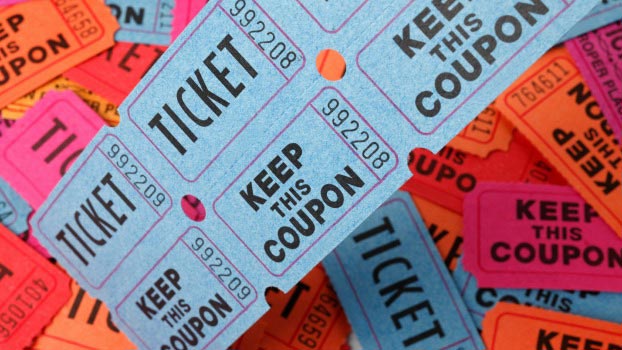
The “ticket system” for behavior modification is a classic example of rewarding students for positive behavior. It seems as though most teachers, at some point in their teaching career, try it to help guide students’ in making better behavior decisions. In fact, many Really Good Stuff teachers frequently write in with how they use tickets in their classroom. Here are some of their suggestions for implementation.
Ticket Carnival
“I have a self-monitoring system in my classroom to increase positive behaviors,” explains Liza, a 5th/6th/7th Grade Special Education Teacher from Williston Park, New York. “I present students with daily rules such as, do my work, follow directions, raise my hand, etc. After each period of the day, the students write YES or NO next to each of the rules (students with fine motor issues can color in a smiley or sad face).
Students earning all YES’s receive a carnival ticket. At the end of the week students have the opportunity to count their tickets and exchange them for rewards. For my students, saving up and trading in are great ways to introduce math concepts while fostering responsibility.
Multi-Purpose Tickets
“To inspire positive behavior, I create a bulletin board display designed to hold reward tickets. I begin by posting to the display library pockets labeled with each child’s name. I then make a supply of construction paper tickets trimmed to fit inside the library pockets,” says Jan, a Reading Teacher from Raleigh, North Carolina. “I use the tickets as rewards for positive behavior. By each Friday, the children usually have accumulated 25-30 tickets.
During the last 30 minutes of school at the end of the week I hold an ‘auction.’ I choose 26-30 prizes, ranging from small items to larger items. To begin the auction, each child counts his or her tickets into piles of tens. As the auction begins, I call the numbers backwards…30, 29, 28, etc. The students with the most tickets choose their prizes first, handing me their tickets beforehand. It is a great incentive for good behavior, but also for teaching math skills (grouping, counting backwards, greater than and less than).”
Incentive Tickets
Allyson, a 2nd Grade Teacher from North Port, Florida shares with us a slightly different way to use tickets in the classroom. “At the beginning of each day, I give my students the opportunity to earn three Really Good Stuff Incentive Tickets. I issue one ticket for coming to class on time, one ticket for handing in homework, and one ticket for producing a signed reading log.
If my students want to leave the classroom during the day to get a drink, they must “pay” me one ticket. At the end of the day, students write their own names on all their remaining tickets and return them to me. I place the tickets into a container and draw one out; that lucky student receives a cool pencil or other small prize. This activity has improved time on task and homework completion. Plus, it’s just fun.”
What is your favorite ticket system strategy? Does a ticket system work for your class?
I use the ticket system also. Each week I raffle off 4 or 5 small prizes. I greet each student in the morning and give them a raffle ticket. That way even the “challenging” students get at least one chance to win. I give tickets for getting on task first thing, for great participation, for showing that they remember something I taught, for responding well to directions. The principal lets students run laps at recess for which they earn a popsicle stick to turn in for a count. I award one ticket per stick. When students lose recess, they get the option of running instead of sitting on the wall, but they must turn in 3 sticks. Beyond 3, they get a ticket. That has really helped with the fidgety boys who need a consequence, but who need to run some of their energy off! I always remind them that the more tickets they earn, the greater chance they have of winning. The weekly raffle is a great motivator to my students.
I like how Allyson has students pay her with a ticket if they want to leave the room! That’s a great ploy to use to get them to stay in the room. However, since it’s done random draw, I might do it either weekly or monthly. If you do it daily, there’s a lot of chance that someone might get picked a lot of times and in the younger grades, the students might not find that fair! But, it’s a great idea!
Each week students have a chance to earn good behavior tickets. They get to color them in and collect them in a bag or an envelope. At the end of the week, they must pay 5 tickets or more to buy items from the classroom store, where they may purchase special pencils, healthy treats or special writing paper. The students must also be on “green” light,which means they have had good citizenship all week. We count the tickets by fives or tens, then staple them and save them for an end-of year good character contest. This idea really helps with classroom management and teaching good citizenship!